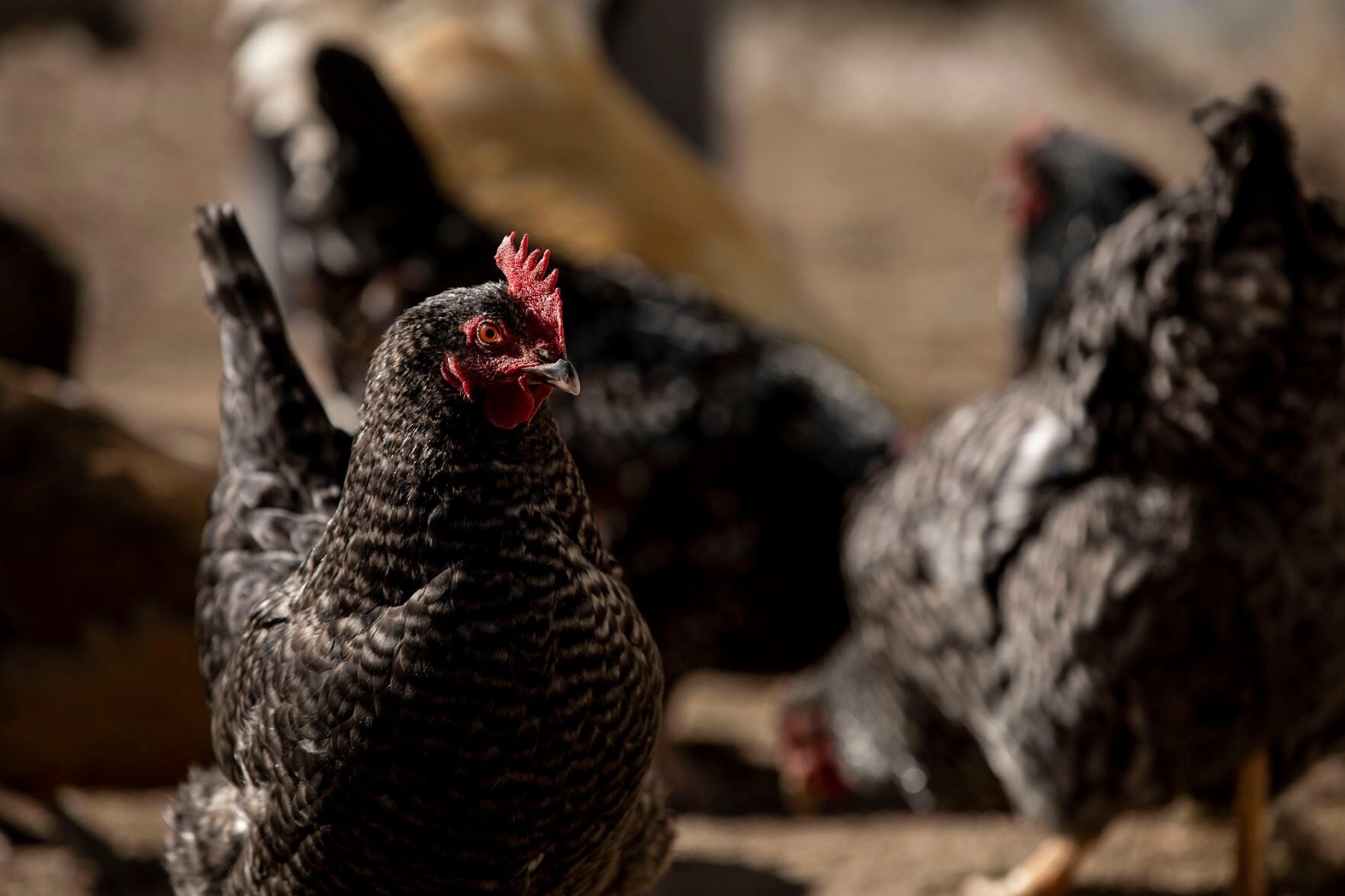As humans recover from COVID, avian flu hits Colorado egg-laying chickens

As Coloradans have begun to recover from two years of COVID-19, the state’s largest foreign-animal disease outbreak has swept through flocks here, killing millions of birds and wiping out 65% of Colorado’s egg-laying chickens.
A particularly virulent strain of highly pathogenic avian influenza has moved through North America since the end of 2021, and more than 40 million domestic birds in the United States have died since the first case was identified in South Carolina in mid-January.
In Colorado, which had never seen highly pathogenic avian influenza before this year, more than 3.5 million birds have died in commercial and backyard flocks, the fourth-highest total in the nation, according to the U.S. Department of Agriculture.
Wild birds are dying, as well, and are the cause of the outbreak, said Maggie Baldwin, Colorado’s state veterinarian. The disease began circulating globally in wild birds last year and is now widespread in that population, she said. Those wild birds, as they pass through Colorado and other states, “are leaving enough virus behind” to infect local birds, she said.
“I don’t know that we know exactly why,” Baldwin said. A national outbreak in 2014-2015 — which didn’t impact Colorado — killed more birds but was less widespread. “It seems to be a virus that’s hearty and can spread easily from bird to bird, and it has some level of environmental contamination where the birds that are dying from the virus are leaving enough of the virus that other birds are picking it up and carrying it on.”
Thousands of Coloradans still awaiting monkeypox vaccine
The strain of avian influenza causes 95% to 100% morbidity and mortality, meaning nearly, if not every, bird that comes into contact with it will be infected and die. As a result, commercial and backyard flock owners have had to euthanize birds on a mass scale.
A Montrose County broiler-breeder facility lost 60,000 chickens earlier this year. Two Weld County egg-laying operations lost more than 3.2 million birds between them, and a third in the county — a pullet facility — lost 200,000. Smaller outbreaks have been identified in backyard flocks in Pitman, La Plata and Jefferson counties. That represents more than 65% of the state’s egg-laying capacity, Baldwin said, and as a result, the price of eggs and chickens has gone up in Colorado this year.
Messages left for various industry groups were not returned over the past week.
The state is in a lull, Baldwin said; the virus hasn’t been detected in a domestic flock since June. But some state experts have projected a resurgence in the fall, coinciding with migratory patterns. New cases are still being identified in other states: Baldwin said both California and Florida identified their first cases recently, indicating the virus is still moving and burning through animals.
Predicting the end game of this outbreak is tough, she said. This is the largest outbreak of a foreign-animal disease in U.S. history.
Colorado’s first West Nile case of 2022 identified in Delta County
“We haven’t seen this before, where it’s just lingering in the wild and resident bird population,” she said. Federal officials report that “Europe has been dealing with this strain for 18 months, with hundreds of outbreaks. We don’t know yet because we haven’t really seen this before.”
Overall, Baldwin said, the outbreak is a good lesson in why the state needs to be prepared for various disease outbreaks. She reiterated that highly pathogenic avian influenza had never been seen in Colorado before, and now it’s arrived in force, with an uncertain future. She praised Colorado’s response and urged people with domestic flocks to monitor their poultry, limit interactions with other birds, and reinforce their bio-security. She also said people should look at animal health and human health as being on the same continuum: Animal diseases can infect humans, and mass outbreaks like this one affect the food supply.
“If we don’t spend enough time on preparing for those diseases and preparing if we get those disease,” Baldwin said, “that’s where the vulnerability lies: not being prepared.”
She stopped short of calling this particularly strong strain a genetic fluke, but she said that sometimes when the virus “joins a certain combination, it’s going to be highly virulent.”
“Some (of) it is just a roll of the dice,” she said. ” … We get the right combination at the right time in the right species, and the virus is going to flourish.”
Safeway pharmacies expand over-the-counter services amid new Colorado law



